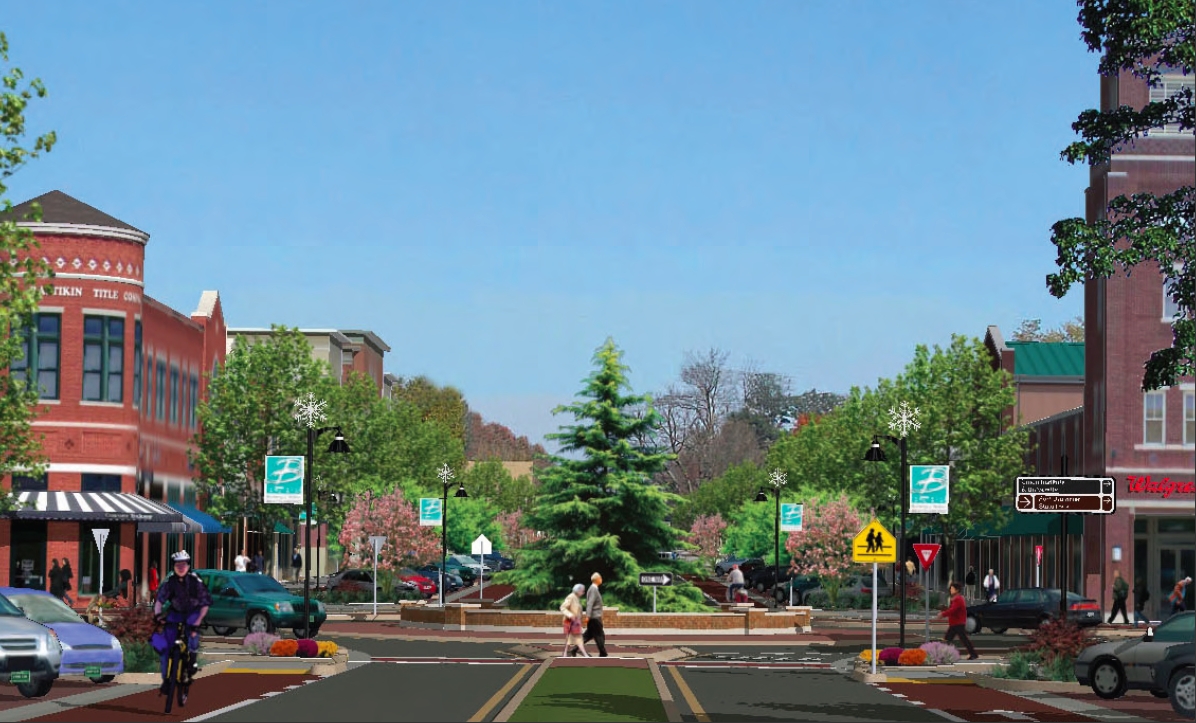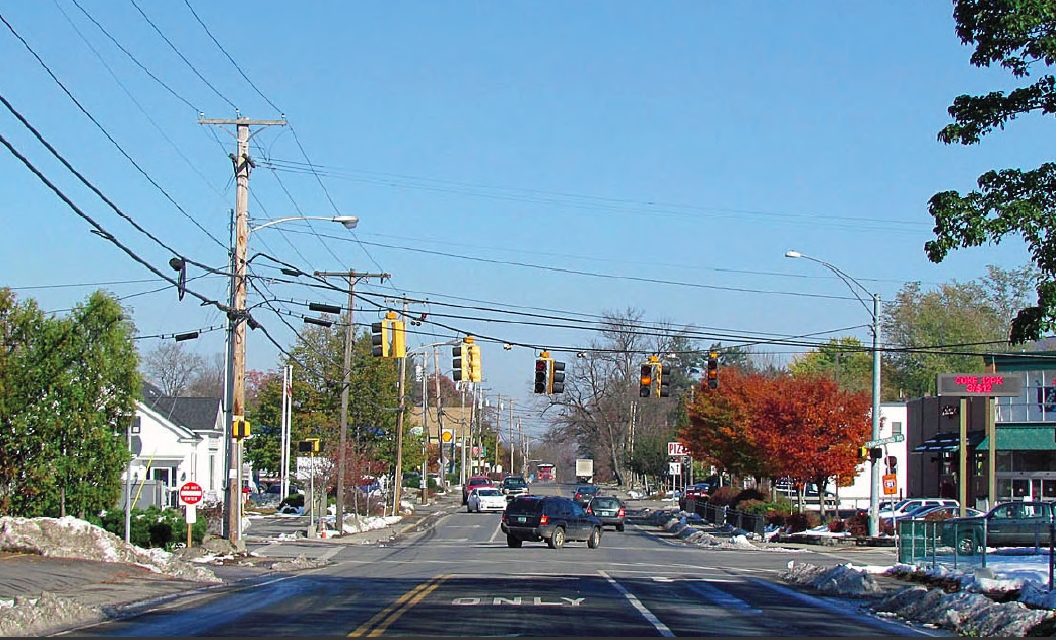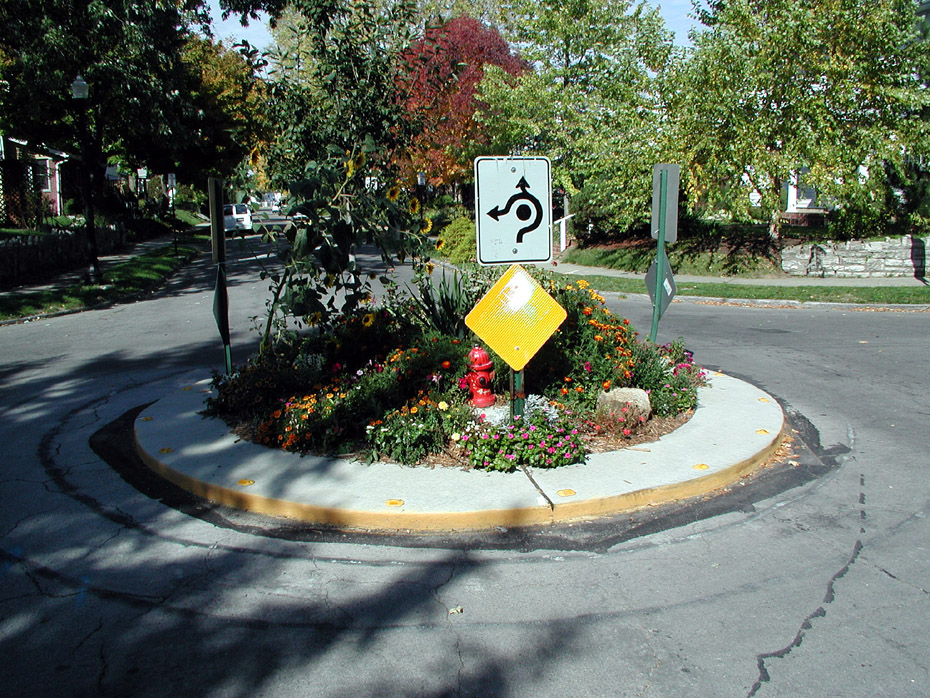Blog Post
Traffic Calming – Saving Lives and Saving Energy

While recent events make us focus close to home, pedestrian safety is a widespread problem. Nationwide in 2009, there were 4,092 pedestrians killed by vehicles and 59,000 accidents. Those pedestrian fatalities represented 12% of all traffic deaths. In addition, there were 630 bicyclists killed in collisions with motor vehicles in 2009 and 51,000 injuries.
So, what can we do about it?
Traffic calming. The Institute of Transportation Engineers defines traffic calming as "the combination of mainly physical measures that reduce the negative effects of motor vehicle use, alter driver behavior, and improve conditions for non-motorized street users." There are a lot of effective strategies for slowing down vehicles and creating pedestrian-friendly communities that are not only improve safety but also help us save energy by making getting around without a car more feasible. Here are a few of these strategies: Install stop signs or traffic lightsThis is the old-school solution. Stop signs and traffic lights slow traffic, to be sure, but they also increase fuel use and pollution from idling. There are better strategies that keep traffic moving, while slowing it down and improving safety.
Narrow travel lanes while adding medians and bike lanes
On narrower streets, we drive slower. If pedestrian collisions do occur, at slower speeds the severity of those injuries and the likelihood of death are greatly reduced. Bike lanes should be wide enough for safety (six feet) and clearly separated from the vehicle lane(s) with a different color or even a different texture. In some cities, a brick or brick-like surface is used for the bike lanes so that vehicle drivers are made aware when they cross into bike lane.

Reduce the sight-line for driversWhen we can see a quarter-mile down a straight-away, we tend to step on the gas. Features that reduce that sight-line include planting trees, adding curb extensions or bulbouts, installing mini traffic circles (see below), and adding chicanes to the roadway--a group of three alternating curb-extensions or bulbouts mid-block that result in an S-curve, which slows traffic.
SUPPORT INDEPENDENT SUSTAINABILITY REPORTING
BuildingGreen relies on our premium members, not on advertisers. Help make our work possible.
See membership options »Install speed humps or raised intersectionsSpeed humps aren't conventional speed bumps, but an updated version that are much wider--typically 12 to 22 feet wide with 3-4 inches of vertical deflection. Raised intersections, in which the entire intersection is raised and may have a different surfacing material. Both of these features are designed so that the faster you drive over them, the greater the discomfort--this is different from speed bumps, which at faster speeds may actually become more comfortable because the car's shock absorbers absorb the bump better. Speed humps don't make sense for traveled routes, but they can be appropriate for smaller residential streets and shopping centers. Downsides include slowing emergency responders and, in cold climates, making snow removal more difficult.

Move sidewalks away from the curb
By moving sidewalks further back from the curb two benefits are realized. First, a buffer strip can be created that can be planted with trees or other landscaping, thus helping to make the streetscape more pedestrian friendly. Second, in a cold climate, snow plowing will not dump snow into the sidewalk, so it's easier to keep sidewalks clear for pedestrians. When the sidewalk is right next to the curb, it's not uncommon for pedestrians to have to walk in the street after a snowstorm--putting themselves at great risk.
Replace stop signs with mini-circles With mini-circles instead of stop signs, cars don't have to stop and start as often, and drivers tend to accelerate less between those intersections. Vehicles move more efficiently and save gas. Because drivers don't see a long straight-away, but instead see a bit of greenery at every intersection, they drive at a more relaxed pace, but by not having to stop at intersections, they get where they're going just as fast. Seattle has installed more than 1,000 mini traffic circles (typically 15-20 feet in diameter) over the past several decades, and neighborhoods take pride in landscaping their local circles; the city even has competitions for the most attractive circles. A study in Seattle found a remarkable 94% reduction in accidents at intersections with mini traffic circles.Beautify streetscapesMore attractive streets with trees, benches, public art, and other amenities encourage drivers to slow down. When all you see from the car is asphalt and parking lots, the tendency is to speed up. Beautification may seem like an unnecessary expense for a town or city, but it can pay off with greater pedestrian safety. Beautification programs can be public-private partnerships to get more bang for the buck from tax dollars.
Putting it all together
Back in our home town of Brattleboro, a walkability audit was conducted last fall of one end of town--coincidentally, not far from where one of the recent fatalities occurred. The audit was part of a day-long workshop funded by the AARP Livable Communities Program. The Town of Brattleboro Planning Department brought in Dan Burden of the Walkable and Livable Communities Institute to examine how to make Brattleboro--and specifically the Canal Street end of town--more pedestrian friendly.
Included in the final report (download here - large file) are inspiring images that show how Canal Street could be dramatically redesigned to slow down traffic, provide for non-motorized ("active") transportation, and improve pedestrian safety. All of these improvements would not only make Brattleboro a nicer place, but also save energy by making it more feasible for residents to leave their cars at home.
Alex is founder of BuildingGreen, Inc. and executive editor of Environmental Building News. To keep up with his latest articles and musings, you can sign up for his Twitter feed.
Published March 6, 2012 Permalink Citation
(2012, March 6). Traffic Calming – Saving Lives and Saving Energy. Retrieved from https://www.buildinggreen.com/blog/traffic-calming-–-saving-lives-and-saving-energy




Add new comment
To post a comment, you need to register for a BuildingGreen Basic membership (free) or login to your existing profile.